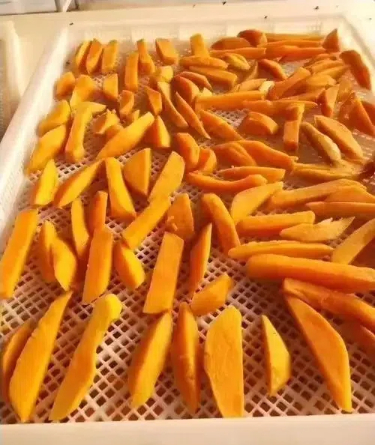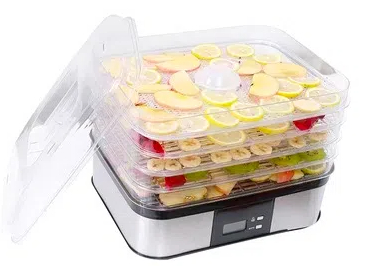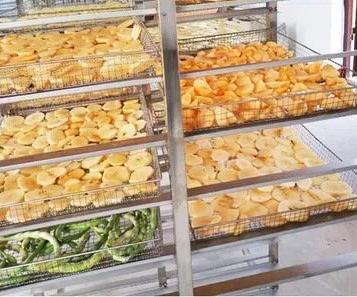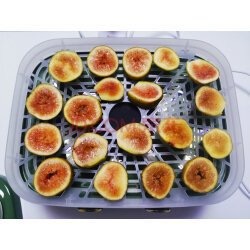
Content Menu
● Understanding Heat Pump Technology
● Advantages of Heat Pump Dryers
● Applications in Food Drying
● The Process of Food Drying with Heat Pump Technology
● Benefits of Heat Pump Drying for Food Products
● Challenges and Considerations
● Conclusion
● Frequently Asked Questions
>> 1. What is the main advantage of using a heat pump dryer?
>> 2. Can heat pump dryers be used for food drying?
>> 3. How do heat pump dryers differ from traditional dryers?
>> 4. Are heat pump dryers more expensive to purchase?
>> 5. What types of food can be dried using heat pump technology?
Heat pump dryers are an innovative solution for drying clothes efficiently and effectively. Unlike traditional dryers that use a heating element to generate hot air, heat pump dryers utilize a heat pump system to recycle air, making them more energy-efficient and environmentally friendly. This article will explore the workings of heat pump dryers, their advantages, and their applications in food drying, particularly in the context of your business as a manufacturer of food drying machines.

Understanding Heat Pump Technology
At the core of a heat pump dryer is a refrigeration cycle that involves four main components: the evaporator, compressor, condenser, and expansion valve. Here’s how these components work together:
1. Evaporator: The process begins in the evaporator, where the air from the dryer drum passes over cold coils. The moisture in the air condenses on these coils, turning into water, which is then collected in a tank or drained away.
2. Compressor: The compressor then takes the refrigerant, which has absorbed the heat from the air, and compresses it. This increases the temperature and pressure of the refrigerant.
3. Condenser: The hot, high-pressure refrigerant gas moves to the condenser, where it releases its heat to the air that is being circulated back into the dryer drum. This process heats the air, which is then used to dry the clothes.
4. Expansion Valve: Finally, the refrigerant passes through the expansion valve, where it cools down and returns to the evaporator to repeat the cycle.
This closed-loop system allows heat pump dryers to use significantly less energy than traditional dryers, often consuming about 50% less energy per load.
Advantages of Heat Pump Dryers
1. Energy Efficiency: As mentioned, heat pump dryers are much more energy-efficient than conventional dryers. This efficiency translates into lower electricity bills and a reduced carbon footprint.
2. Gentle Drying: The lower drying temperatures used in heat pump dryers are gentler on fabrics, which helps to preserve the quality and lifespan of clothing.
3. No Venting Required: Heat pump dryers do not require external venting, making them ideal for apartments or homes without proper ventilation. They can be installed in various locations, including closets or laundry rooms.
4. Moisture Control: These dryers effectively manage moisture levels, which can help prevent mold and mildew in laundry areas.
5. Versatility: Heat pump technology can be adapted for various applications, including food drying, which is particularly relevant for your business.
Applications in Food Drying
In the context of food drying, heat pump technology offers several benefits:
1. Controlled Environment: Heat pump dryers can maintain specific temperature and humidity levels, which is crucial for preserving the quality of food products. This control helps in retaining flavors, colors, and nutritional value.
2. Energy Savings: The energy efficiency of heat pump dryers can significantly reduce operational costs for food manufacturers, making them a cost-effective solution for large-scale drying operations.
3. Scalability: Heat pump drying systems can be scaled to meet the needs of different production volumes, from small batches to large industrial applications.
4. Quality Preservation: By using lower temperatures, heat pump dryers minimize the risk of over-drying or damaging delicate food items, ensuring that the final product meets quality standards.

The Process of Food Drying with Heat Pump Technology
The process of drying food using heat pump technology involves several key steps:
1. Preparation: Before drying, food items must be prepared. This may include washing, cutting, and blanching vegetables or slicing fruits. Proper preparation ensures even drying and helps maintain the food's quality.
2. Loading the Dryer: Once prepared, the food is loaded into the heat pump dryer. The design of the dryer allows for optimal airflow around the food items, which is essential for effective drying.
3. Setting Parameters: Operators can set specific drying parameters, including temperature and humidity levels, based on the type of food being dried. This customization is crucial for achieving the best results.
4. Drying Cycle: The heat pump dryer begins its cycle, circulating warm air around the food. The moisture is gradually removed, and the temperature is carefully controlled to prevent cooking the food.
5. Cooling and Packaging: After the drying cycle is complete, the food is allowed to cool before being packaged. Proper cooling is essential to prevent condensation, which can lead to spoilage.
Benefits of Heat Pump Drying for Food Products
Heat pump drying offers numerous benefits for food manufacturers:
1. Nutritional Retention: The gentle drying process helps retain the nutritional value of food, making it a healthier option for consumers.
2. Flavor Preservation: By controlling the drying environment, heat pump dryers help preserve the natural flavors of food, resulting in a more appealing final product.
3. Extended Shelf Life: Properly dried food has a longer shelf life, reducing waste and increasing profitability for manufacturers.
4. Reduced Energy Costs: The energy efficiency of heat pump dryers translates into significant cost savings over time, making them an attractive investment for food processing businesses.
5. Environmentally Friendly: By using less energy and producing less waste, heat pump dryers contribute to more sustainable food production practices.
Challenges and Considerations
While heat pump dryers offer many advantages, there are also challenges to consider:
1. Initial Investment: The upfront cost of heat pump dryers can be higher than traditional drying methods. However, the long-term savings often justify this investment.
2. Maintenance: Regular maintenance is essential to ensure optimal performance. This includes cleaning filters and checking refrigerant levels.
3. Training: Staff may require training to operate heat pump dryers effectively, particularly in setting the correct parameters for different food types.
Conclusion
Heat pump dryers represent a significant advancement in drying technology, offering energy efficiency, versatility, and quality preservation. For your factory producing food drying machines, understanding the principles of heat pump technology can enhance your product offerings and meet the growing demand for sustainable and efficient drying solutions.

Frequently Asked Questions
1. What is the main advantage of using a heat pump dryer?
The main advantage is energy efficiency, as heat pump dryers use significantly less energy compared to traditional dryers.
2. Can heat pump dryers be used for food drying?
Yes, heat pump dryers are ideal for food drying due to their ability to control temperature and humidity levels effectively.
3. How do heat pump dryers differ from traditional dryers?
Heat pump dryers recycle air and use lower temperatures, while traditional dryers generate hot air and require venting.
4. Are heat pump dryers more expensive to purchase?
Yes, heat pump dryers typically have a higher upfront cost, but they save money in the long run through lower energy bills.
5. What types of food can be dried using heat pump technology?
A wide variety of foods can be dried, including fruits, vegetables, herbs, and meats, while preserving their quality and nutritional value.












